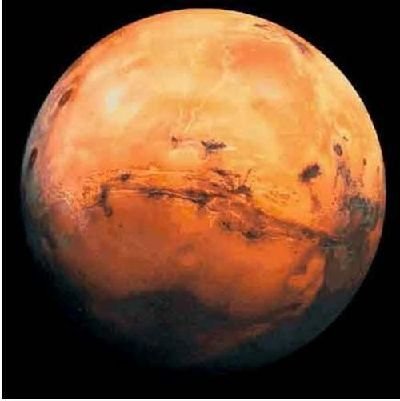
A Way to Mars(4)
USINFO | 2013-07-17 13:10

The astronauts conduct a full survey, looking for unusual mineral outcrops and other promising places to dig for samples that might date to the earliest days of the solar system. NASA will want to send a crew that is half Indiana Jones and half Mr. Scott: astronauts with both the scientific background needed to spot precious samples hidden in the dust and the engineering background needed to fix any problems along the way.
When the month is up, the ion drive nudges the deep-space vehicle away from the asteroid and onto a six-month trajectory back home. A few days before reaching Earth, the crew climbs into a capsule, separates from the main ship and sets course to splash down. The empty deep-space vehicle remains on an orbit around the sun. It performs a flyby of Earth and continues thrusting with the ion drive to lower its energy with respect to the Earth-moon system, so that when it comes back to Earth a year later, it can use a lunar flyby to reenter high Earth orbit and await its next mission. Its ion drive and habitat module could be reused multiple times.
After several yearlong asteroid missions, incremental improvements to life-support systems and radiation shielding will pave the way to Mars. The first Mars mission might not actually touch down on the planet. Instead it will likely explore its two moons, Phobos and Deimos [see “To Mars by Way of Its Moons,” by S. Fred Singer; Scientific American, March 2000]. Such an expedition is essentially an asteroid mission stretched out to a two-and-a-half-year round-trip. At first glance, it might seem silly to go all the way to Mars and not land on it, but landing would enormously complicate the mission. Missions to the Martian moons allow astronauts to become adept at traveling through interplanetary space before attempting the challenge of touching down on Mars, traveling around and lifting off again.
Engineers have already come up with various tactics to maximize the flexibility and minimize the cost of a Mars surface mission. The most compelling begin by preplacing habitats and exploration systems on the surface so that the astronauts have a base ready for them when they arrive. This equipment can go by slow (ion) boat. Once there it will produce propellant on Mars itself, either by distilling carbon dioxide from the atmosphere and mixing it with hydrogen brought from Earth to generate methane and oxygen or by electrolyzing water from the permafrost to make liquid hydrogen and oxygen. By sending an empty return rocket that can be fueled in situ, mission planners reduce the launch mass from Earth dramatically [see “The Mars Direct Plan,” by Robert Zubrin; Scientific American, March 2000].
The relative motion of Earth and Mars gives the astronauts about one and a half (Earth) years on the surface before the planets come back into alignment, so they will have plenty of time to reconnoiter. At the end of their stay, they board a launch vehicle filled with locally manufactured fuel, blast off to Mars orbit, rendezvous with a deep-space vehicle derived from the asteroid campaign and return to Earth. The vehicle could even be placed on a cycler trajectory that shuttles back and forth between Earth and Mars, using gravity slingshots to provide all the propulsion for free [see “A Bus between the Planets,” by James Oberg and Buzz Aldrin; Scientific American, March 2000].
Even with the advance placement of matériel, a Mars lander and return rocket are extremely heavy and will need the largest planned SLS launcher to send them on their way. But the first deep-space missions can be built from smaller parts that are launched on the first SLS or even on existing rockets. The gradualist approach we recommend will maximize the resilience of the program and let NASA concentrate on solving the truly hard problems, such as radiation shielding.
NASA now has the best opportunity in a generation to refocus itself on new types of space vehicles that reach into interplanetary space. The greatest barriers to space exploration are not technical but a matter of figuring out how to do more with less. If NASA plans an incremental sequence of technology development and missions of steadily increasing ambition, human spaceflight can break free of low Earth orbit for the first time in 40 years and enter its most exciting era ever. With flexible planning, NASA can forge a path to wander among the wandering stars.
Damon Landau is an outer-planet mission analyst at the NASA Jet Propulsion Laboratory (JPL). He helped to design the trajectory for NASA's recently launched Juno mission to Jupiter and worked on the agency's survey of near-Earth asteroids that astronauts might visit. Nathan J. Strange is a JPL mission architect. He was on the navigation team for the Cassini-Huygens mission to Saturn and collaborated on the design of the gravity-assist tour of Saturn's moons. He has worked on technical blueprints for future human missions.
Share this page



















